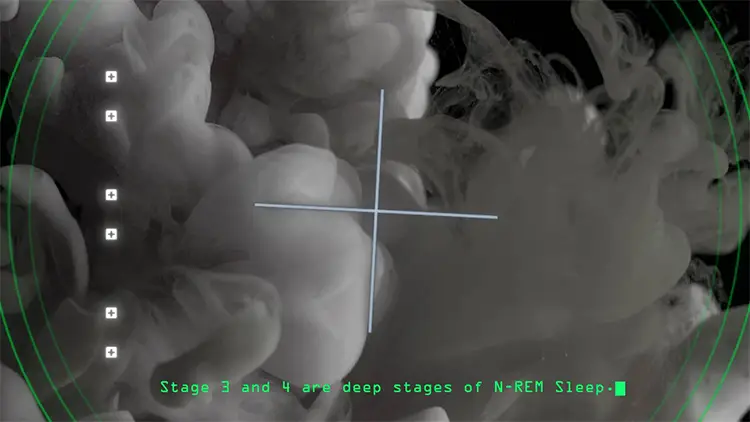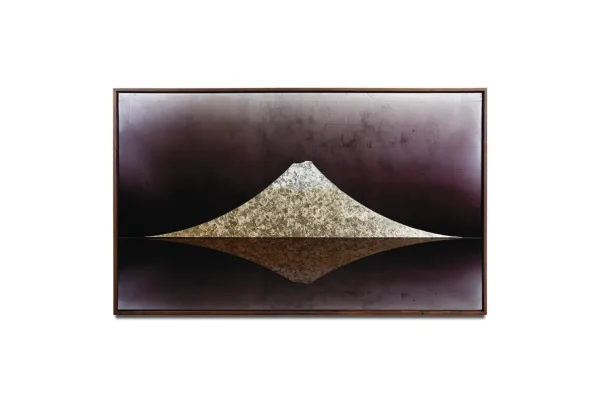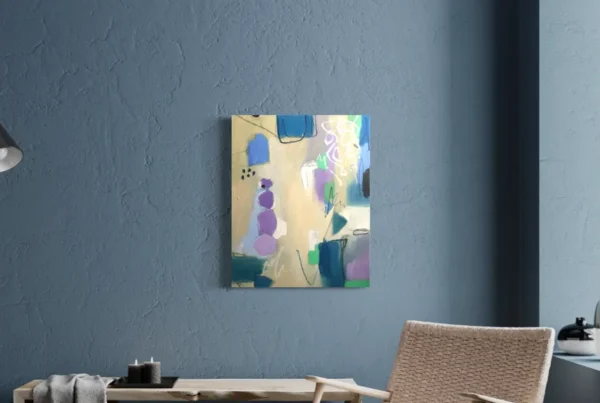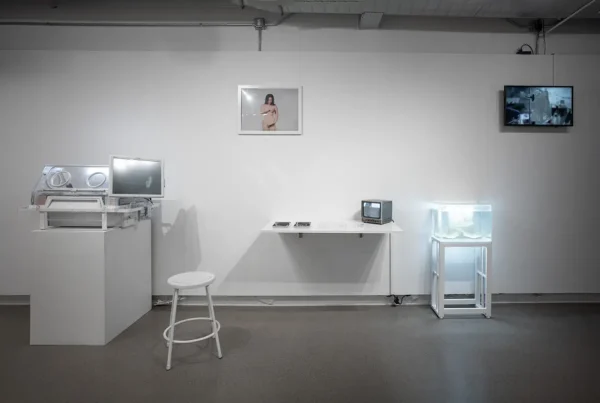“Design doesn’t require translation—it can communicate instantly, across cultures, just by how it looks and feels.”
The Visual Voice of Movement
In a world where boundaries often divide and language can fail to connect, YoonJi Yang has crafted a practice rooted in visual fluency. A digital designer whose career spans both commercial design and deeply personal expression, she currently shapes brand narratives as the Brand & Creative Designer at Homethrive, Inc., a healthcare technology company. Her work is not just about making things look good—it’s about making them resonate. With each pixel, she strives to translate complex ideas and human experiences into designs that are instantly felt, regardless of cultural or linguistic background.
Yang’s journey into design is layered with the texture of a nomadic upbringing. Having spent her formative years moving between countries, she was constantly adapting to new surroundings, dialects, and societal norms. In the instability of those transitions, art became her language of stability and self-definition. What began as a child’s creative outlet eventually evolved into a lifelong exploration of design as a conduit for empathy and connection. It was through this lens—where communication transcends words—that Yang honed her unique voice as a designer capable of speaking across cultural divides.
This adaptive, global perspective continues to shape her approach today. Rather than narrowing her work into rigid categories, Yang treats design as a fluid discipline—an expansive platform for storytelling. Her fascination with the mechanics of visual systems, especially in how they operate across digital and physical mediums, reflects an ongoing curiosity about how meaning is constructed. To her, design is a visual dialogue: bold, immediate, and profoundly human.
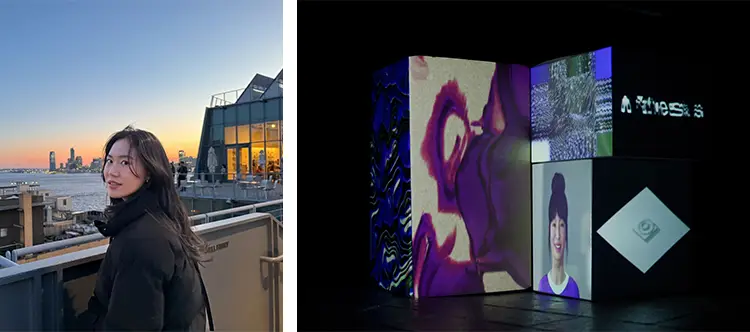
YoonJi Yang: From Sketches to Systems
While Yang’s current practice is rooted in the digital world, her creative foundations are firmly grounded in fine art. The transition from traditional mediums to interface design was less a departure and more an evolution—a recognition that the instincts honed through painting, photography, and screen printing could find new expression through digital tools. She was captivated not just by the aesthetics of design, but by its range: the way it could inform a mobile experience one day, and elevate a printed artifact the next. This versatility became central to her career trajectory, drawing her deeper into a profession that thrives on adaptability and intention.
Her early experiences with frequent relocation cultivated a hyperawareness of how small visual cues influence perception and understanding. It made her especially sensitive to the ways design can build common ground. This ability to see across differences, and to distill meaning into clean, communicative visuals, became her creative superpower. As she refined her design voice, she leaned into the aspects of the medium that could serve clarity without sacrificing personality. Whether in typography, layout, or color, her work consistently aims to connect rather than obscure.
This sensibility is perhaps most evident in her exploration of branding for technology and service-oriented companies. Yang is particularly drawn to the challenge of translating a company’s values and operational identity into a visual ecosystem. For her, it’s not just about logos or palettes—it’s about building a visual infrastructure that reflects how the brand behaves and what it promises. She finds energy in the process of distilling abstract principles into tangible assets, creating identities that aren’t just seen, but felt.

Design Without Borders
Yang’s style is marked by a confidence in simplicity and an embrace of the bold. Her compositions are often vivid, direct, and unafraid to demand attention—yet always with intention behind each choice. She believes design should speak clearly, without excessive explanation, and values the immediacy with which visual elements can cross linguistic and cultural lines. This belief drives her preference for designs that stand out instantly, those that are grounded in strong visual concepts and accessible across contexts.
Her attraction to clarity is also evident in her admiration for Swiss-style grid systems. Though she acknowledges their structural rigor can be demanding, she appreciates their balance and precision, especially in poster and typography work. Yang often finds herself drawn to this tension between structure and expression—a dynamic that recurs throughout her portfolio. Whether working within tight brand constraints or experimenting with more expressive projects, she finds beauty in the push and pull of order versus emotion.
The internet continues to be a rich source of inspiration for her. Platforms like Behance, Dribbble, and the Figma community feed her curiosity and allow her to observe how other designers solve visual problems. Rather than adhering to a single influence, she embraces a collage approach—pulling from the work of others, remixing, and reimagining to suit the demands of her own voice. This open-ended engagement with design culture reflects her broader artistic philosophy: that good design emerges from conversation, not isolation.
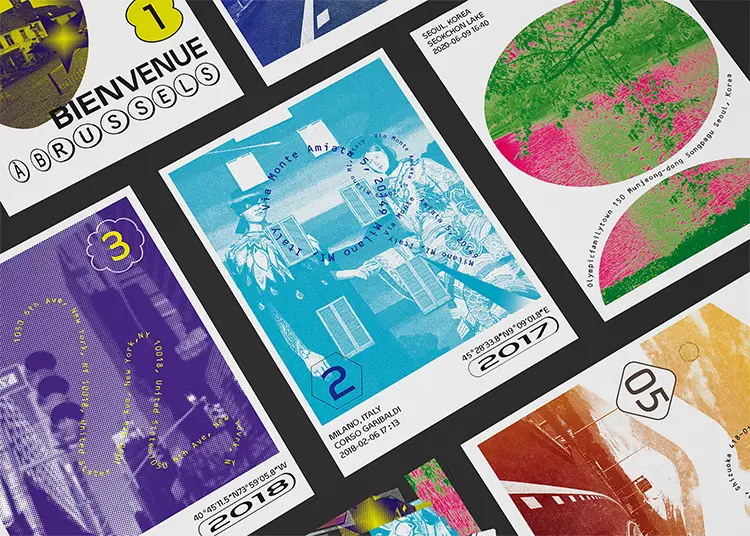
YoonJi Yang: Memory in Motion
Among her many projects, one piece stands out as especially meaningful: Boarding. The work captures the dual threads that run through her life and practice—movement and memory. Blending design elements with personal photographs, color schemes from past homes, and layout styles she’s cultivated over time, the piece becomes more than just a design—it becomes a visual autobiography. For Yang, creating Boarding was akin to a form of visual journaling, offering a way to document not just experiences, but the emotional texture behind them.
The process of creating Boarding was deeply introspective. Sifting through old images and artifacts, Yang used the project as an opportunity to trace how her past has shaped her present creative instincts. The resulting design is both grounded and exploratory—a composition that bridges internal reflection with external communication. It’s a vivid reminder of how design can serve as both archive and expression, preserving memory while transforming it into something communicable and sharable.
Yang’s future ambitions continue this thread of merging emotion with experience. She dreams of presenting her work in an interactive setting, where the process is as visible as the final product. Whether through layered posters that reveal their evolution, or immersive installations that recreate the atmosphere of a single captured moment, she is driven by the urge to deepen engagement. She envisions experiences where the viewer doesn’t just see a design, but feels the context from which it emerged—where visual storytelling becomes sensory, spatial, and deeply human.
